-
WróćX
-
Компоненты
-
-
Category
-
Полупроводниковые приборы
- Диоды
- Тиристоры
-
Электро-изолированные модули
- Электроизолированные модули | ВИШАЙ (ИК)
- Электроизолированные модули | INFINEON (EUPEC)
- Электроизолированные модули | Семикрон
- Электроизолированные модули | POWEREX
- Электроизолированные модули | IXYS
- Электроизолированные модули | ПОЗЕЙКО
- Электроизолированные модули | ABB
- Электроизолированные модули | TECHSEM
- Przejdź do podkategorii
- Выпрямительные мостики
-
Транзисторы
- Транзисторы | GeneSiC
- Модули SiC MOSFET | Mitsubishi
- Модули SiC MOSFET | STARPOWER
- Модули ABB SiC MOSFET
- Модули IGBT | МИЦУБИСИ
- Транзисторные модули | MITSUBISHI
- Модули MOSFET | МИЦУБИСИ
- Транзисторные модули | ABB
- Модули IGBT | POWEREX
- Модули IGBT | INFINEON (EUPEC)
- Полупроводниковые элементы из карбида кремния (SiC)
- Przejdź do podkategorii
- Драйвера
- Блоки мощности
- Przejdź do podkategorii
- Электрические преобразователи
-
Пассивные компоненты (конденсаторы, резисторы, предохранители, фильтры)
- Резисторы
-
Предохранители
- Миниатюрные предохранители для электронных плат серии ABC и AGC
- Быстрые трубчатые предохранители
- Медленные вставки с характеристиками GL/GG и AM
- Ультрабыстрые плавкие вставки
- Быстрые предохранители английский и американский стандарт
- Быстрые предохранители европейский стандарт
- Тяговые предохранители
- Высоковольтные предохранительные вставки
- Przejdź do podkategorii
-
Конденсаторы
- Конденсаторы для электромоторов
- Электролитические конденсаторы
- Конденсаторы типа snubbers
- Конденсаторы мощности
- Конденсаторы для цепей DC
- Конденсаторы для компенсации пассивной мощности
- Высоковольтные конденсаторы
- Конденсаторы большой мощности для индукционного нагрева
- Импульсные конденсаторы
- Конденсаторы звена постоянного тока
- Конденсаторы для цепей переменного/постоянного тока
- Przejdź do podkategorii
- Противопомеховые фильтры
- Ионисторы
- Защита от перенапряжения
- Фильтры обнаружения излучения TEMPEST
- Ограничитель перенапряжения
- Przejdź do podkategorii
-
Реле и контакторы
- Теория реле и контакторы
- Полупроводниковые реле AC 3-фазные
- Полупроводниковые реле DC
- Контроллеры, системы управления и аксессуары
- Системы плавного пуска и реверсивные контакторы
- Электро-механические реле
- Контакторы
- Оборотные переключатели
-
Полупроводниковые реле AC 1-фазные
- РЕЛЕ AC 1-ФАЗНЫЕ СЕРИИ 1 D2425 | D2450
- Однофазное реле AC серии CWA и CWD
- Однофазное реле AC серии CMRA и CMRD
- Однофазное реле AC серии PS
- Реле AC двойное и четверное серии D24 D, TD24 Q, H12D48 D
- Однофазные твердотельные реле серии gn
- Однофазные полупроводниковые реле переменного тока серии ckr
- Однофазные реле переменного тока ERDA И ERAA SERIES для DIN-рейки
- Однофазные реле переменного тока на ток 150А
- Двойные твердотельные реле, интегрированные с радиатором для DIN-рейки
- Przejdź do podkategorii
- Полупроводниковые реле AC 1-фазные для печати
- Интерфейсные реле
- Przejdź do podkategorii
- Индукционные компоненты
- Радиаторы, варисторы, термическая защита
- Вентиляторы
- Кондиционеры, оборудование для шкафов, охладители
-
Аккумуляторы, зарядные устройства, буферные источники питания и инверторы
- Аккумуляторы, зарядные устройства - теоретическое описание
- Модульные литий-ионные аккумуляторы, пользовательские батареи, Система управления батареями (BMS)
- Аккумуляторы
- Зарядные устройства и аксессуары
- Резервный источник питания ИБП и буферные источники питания
- Преобразователи и аксессуары для фотовольтаики
- Хранилище энергии
- Топливные элементы
- Литий-ионные аккумуляторы
- Przejdź do podkategorii
-
Автоматика
- Подъемники Spiralift
- Запчасти для дронов Futaba
- Концевые выключатели, Микровыключатели
- Датчики Преобразователи
- Пирометры
- Счетчики, Реле времени, Панельные измерительные приборы
- Промышленные защитные устройства
- Световые и звуковые сигнальные установки
- Термокамеры, Тепловизоры
- LED-экраны
- Управляющая аппаратура
- Przejdź do podkategorii
-
Провода, литцендрат, гофрированные рукава, гибкие соединения
- Провода
- Кабельные вводы и муфты
- Многожильные провода (Lica)
-
Кабели и провода для специальных применений
- Удлинительные и компенсационные провода
- Провода для термопар
- Присоединительные провода для датчиков PT
- Многожильные провода темп. от -60C до +1400C
- Провода среднего напряжения
- Провода зажигания
- Нагревательные провода
- Одножильные провода темп. от -60C до +450C
- Железнодородные провода
- Нагревательные провода в Ex
- Przejdź do podkategorii
- Оболочки
-
Плетеные кабели
- Плоские плетеные кабели
- Круглые плетеные кабели
- Очень гибкие плетеные кабели - плоские
- Очень гибкие плетеные кабели - круглые
- Медные цилиндрические плетеные кабели
- Медные цилиндрические плетеные кабели и кожуха
- Гибкие заземляющие ленты
- Цилиндрические плетеные провода из луженой и нержавеющей стали
- Медные изолированные плетеные провода PCV - температура до 85 градусов C
- Плоские алюминиевые плетеные провода
- Соединительный набор - плетеные провода и трубки
- Przejdź do podkategorii
- Аксессуары для тяги
- Кабельные наконечники
- Изолированные эластичные шины
- Многослойные гибкие шины
- Системы прокладки кабеля (PESZLE)
- Przejdź do podkategorii
- Zobacz wszystkie kategorie
-
Полупроводниковые приборы
-
-
- Поставщики
-
Программы
- Energy bank
- Автоматика HVAC
- Горное дело, металлургия и литейное дело
- Двигатели и трансформаторы
- Измерение и регулирование температуры
- Измерение и регулирование температуры
- Индукционный нагрев
- Индустриальная автоматизация
- Источники питания (ИБП) и выпрямительные системы
- Компоненты для потенциально взрывоопасных сред (EX)
- Машины для сушки и обработки древесины
- Машины для термоформования пластмасс
- Оборудование для распределительных, контрольных и телекоммуникационных шкафов
- Печать
- Приводы переменного и постоянного тока (инверторы)
- Промышленная автоматика
- Промышленные защитные устройства
- Сварочные аппараты и сварочные аппараты
- Станки с ЧПУ
- Трамвай и ж / д тяга
-
Монтаж
-
-
Индукторы
-
-
Индукционные устройства
-
-
Услуга
-
- Контакт
- Zobacz wszystkie kategorie
Трансформаторы для управления тиристорами – что нужно знать

In electronics and power systems, thyristors play a significant role, enabling precise control of current flow in AC and DC circuits. To properly trigger their conduction, a control transformer is an essential component. This specialized transformer allows for safe and efficient connection of thyristors to power regulation circuits, ensuring reliable operation even in high-power systems.
A thyristor is a semiconductor device composed of four layers of silicon that can act as a switch for alternating or direct current. Its ability to remain in a conducting state after being triggered by a gate pulse makes it invaluable in phase control circuits and HVAC systems, DC motor drives, and power electronics.
Transformer – what is its purpose in a thyristor circuit?
A control transformer serves an isolation function and provides the appropriate pulse to the thyristor gate, which is necessary to start conduction between the anode and cathode. It allows safe control of current flow in the circuit, avoiding a direct connection between the high-voltage circuit and the control system.
Using a control transformer also helps protect the controller from surges and interference generated by the load. In practice, this means higher reliability and longer lifespan of thyristors used in high-power circuits.
Principle of operation of a thyristor and control transformer
A thyristor consists of four semiconductor layers – two P and two N junctions – allowing control of current flow through a pulse applied to the gate relative to the cathode. In the resting state, the device blocks current flow from anode to cathode, and after a gate pulse is applied, it starts conducting until the voltage between anode and cathode drops below the threshold value.
The control transformer provides a pulse with the appropriate amplitude and duration, causing the thyristor to start conducting. In practice, the transformer consists of a primary and secondary winding, and its secondary windings are connected to the thyristor gate through a resistor or diode to control the current and protect the device from damage.
Thyristor symbol and connection diagram
In electronic schematics, the thyristor symbol is represented by a triangle pointing toward the anode with a line extending from the gate. A pulse applied to the gate triggers conduction between the anode and cathode.
In phase control circuits, a control transformer is often connected to the thyristor in a topology with a resistor or diode, allowing linear power regulation and control of current flow in the circuit. The connection diagram enables safe integration of components with mains voltage or other AC power sources.
Applications of transformers for thyristor control
Control transformers are used in many areas of power electronics:
1. Phase control in HVAC systems – allows regulation of heating or cooling power.
2. DC motor drives motors – thyristors controlled by a transformer enable precise speed and torque regulation.
3. Lighting systems control – brightness regulation through output current modulation.
4. Industrial power systems – controlling large loads while maintaining safety of control circuits.
In each of these applications, a control transformer enables safe triggering of thyristors, minimizes the risk of damage, and ensures stable current flow.
Electronic control transformer – features and benefits
In modern electronic systems, a control transformer is characterized by:
- Low capacitance between windings, reducing coupling and interference.
- Surge resistance, protecting transistors and thyristors from damage.
- The ability to operate in high-power circuits at high switching frequencies.
- The capability to generate short-duration pulses, allowing precise triggering of devices.
Thanks to these features, a control transformer is an essential component in thyristor control circuits, both in classical industrial systems and modern power electronics.
Thyristor control – practical tips
To properly trigger a thyristor, it is necessary to correctly select the control transformer, resistor, and diode in the circuit. It is important to ensure that the gate current is sufficient to start conduction but does not exceed the device's allowable value.
In practice, a control transformer allows connecting a thyristor to a power circuit without the risk of direct contact with high voltage. This enables power control in phase circuits, brightness adjustment in lighting systems, and DC motor operation control.
Principle of operation of a control transformer
The basic principle is that a pulse in the primary winding generates a changing magnetic field in the core, which induces a current pulse in the secondary winding. This pulse reaches the thyristor gate, causing it to conduct.
By using secondary windings and components such as a resistor or diode, precise current control is possible while reducing the risk of thyristor damage. A control transformer also provides galvanic isolation, protecting the control circuit from mains voltage or surges.
Summary
A control transformer is an indispensable component in systems using thyristors. It allows safe current triggering, stable power regulation, and protection of control circuits in electronics and industrial systems. It enables precise control of current flow, reliable operation of phase circuits, and safety in high-power circuits.
We invite you to explore our offer and discover how a control transformer can enhance the performance of your systems. Check out our solutions and choose components tailored to your needs.
Связанные продукты
Связанные посты
 Thermally conductive materials in power storages
Thermally conductive materials in power storages
 Measuring power and energy in electric circuits
Measuring power and energy in electric circuits
 Wentylatory przemysłowe - rodzaje, właściwości
Wentylatory przemysłowe - rodzaje, właściwości

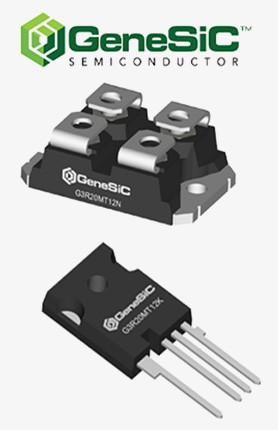
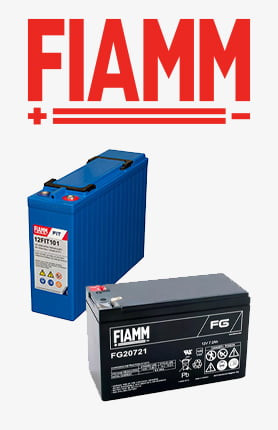

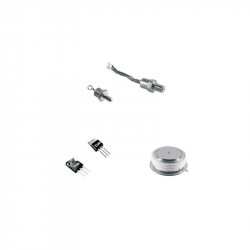
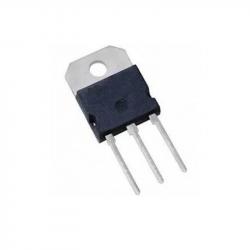
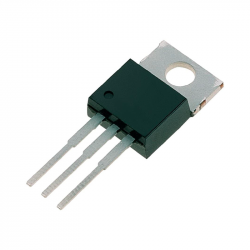
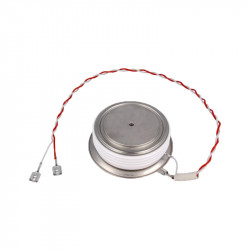
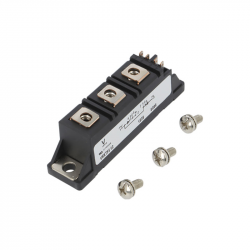
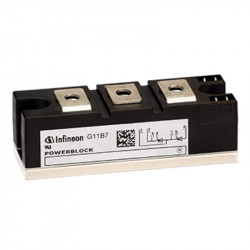
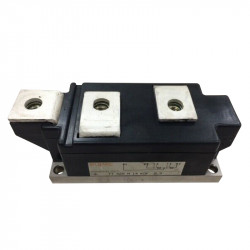
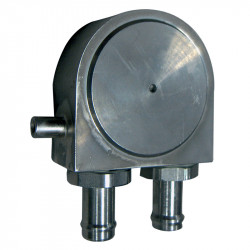
Оставить комментарий